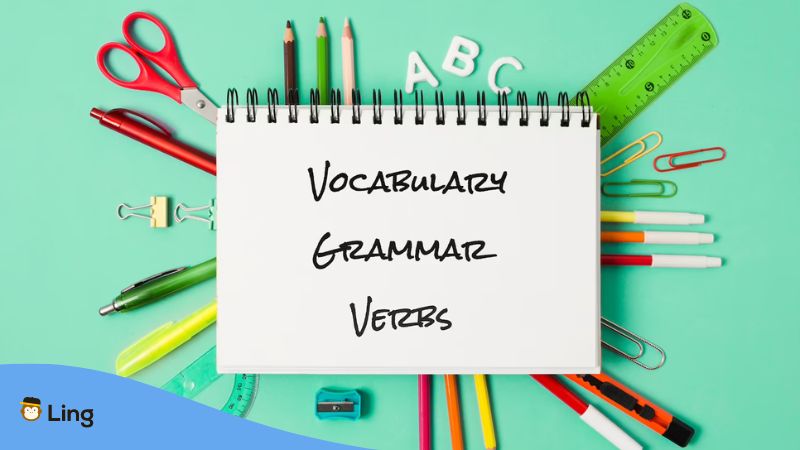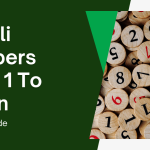Are you eyeing Punjabi as your new language venture? Good choice because Punjabi’s got a charisma of its own.
It’s the official language of people from Northern India and Eastern Pakistan.
Now, let’s talk business. What’s first on our list? Grammar!
“Why grammar?” You might ask. It’s simple.
Grammar is like a blueprint. It’s the backbone of any language, including Punjabi.
It helps us organize words, form thoughts, and communicate effectively.
In this guide, we’ll start learning Punjabi from scratch.
We’ll cover the Punjabi alphabet, sentence structure, and more!
All these are beginner-friendly!
Sounds good? Then, let’s hit the road with beginner Punjabi grammar!
The Punjabi Alphabet And Phonetics For Beginners
The Punjabi alphabet is the first building block of Punjabi grammar. Once we’ve got the alphabet down, we can move on to phonetics.
But what’s phonetics, anyway? It’s the sounds each letter makes. Sounds simple, right?
Familiarizing With The Gurmukhi Script
Now, onto the Gurmukhi script. Heard of it before?
That’s what the Punjabi alphabet is written in.
This script has 35 consonants, 9 vowel symbols, and several unique characters.
Seems overwhelming? It’s not as complex as it sounds.
Take ਸ (‘sa’) and ਮ (‘ma’) as examples. These are individual consonants.
Now pair a consonant with a vowel, and you get ਸੇ (‘se’) and ਮਾ (‘maa’).
Here, the vowel’ ਆ’ has been added to both consonants. Easy enough, isn’t it?
And about those unique characters, they’re what make the Punjabi language stand out.
The ਅੱਧਕ (‘addak’), for instance, doubles the consonant that follows.
For example, ਕ (‘ka’) becomes ਕੱਕ (‘kakka’).
Essential Phonetics For Pronunciation
Now let’s talk about sounds. Why, you ask? Because Punjabi is a tonal language.
This means the pitch or tone of a word can change its meaning.
In Punjabi, there are three basic tones: high falling, low rising, and level.
Let’s use the word ਕੰਨ (‘kann’) as an example.
With a high falling tone, it means ‘ear,’ but with a low rising tone, it’s an ‘arrow.’
Interesting, right?
Remember, perfecting phonetics is a gradual process.
It’s about tuning your ear to these sounds. And the best way to do this? Listen to people who speak Punjabi fluently.
Pay attention to the way they pronounce common words.
This way, you’ll not only learn the tones, but you’ll also get the rhythm of the language.

The Fundamentals Of Punjabi Vocabulary
Next up? Vocabulary! Without words, we can’t form sentences, right?
And sentences are how we communicate. So, let’s get into it.
Basic Punjabi Nouns
Nouns are the names we give to places, people, and things.
In Punjabi, nouns come in two genders: masculine and feminine.
For instance, ਕੁੜੀ (‘kuri’) means ‘girl,’ while ਮੁੰਡਾ (‘munda’) means ‘boy.’ Not too difficult, right?
Essential Punjabi Verbs
Verbs are action words. They’re what we do.
In Punjabi, verbs change depending on who’s doing the action.
Take ਖਾਣਾ (‘khana’), which means ‘to eat.’
If I’m eating, we say ਮੈਂ ਖਾ ਰਿਹਾ ਹਾਂ (‘main kha riha haan’).
But if you’re eating, it’s ਤੁਸੀਂ ਖਾ ਰਹੇ ਹੋ (‘tusi kha rahe ho’).
It’s all about matching the verb to the subject.
Common Punjabi Adjectives
Adjectives are the flavor in our language soup. They help us describe nouns.
ਵਧੀਆ (‘vadiya’) means ‘good,’ and ਮੀਠਾ (‘mitha’) means ‘sweet.’
So if you’re having a good day, you could say ਮੇਰਾ ਦਿਨ ਵਧੀਆ ਹੈ (‘mera din vadiya hai’).
Do you see how Punjabi adjectives can paint a clearer picture?
Introduction To Numbers In Punjabi
Last but not least, let’s count in Punjabi.
The number ’one’ is ਇੱਕ (‘ikk’), and ‘two’ is ਦੋ (‘do’).
So if you have two sweet apples, you would say ਮੇਰੇ ਕੋਲ ਦੋ ਮੀਠੇ ਸੇਬ ਹਨ (‘mere kol do mithe seb han’). Makes sense?
Since this is all about beginner Punjabi grammar, that’s it for vocabulary.
The Beginner’s Punjabi Sentence Structure
Alright, it’s time to start stringing those words together.
What’s the use of having a vocabulary if we can’t form sentences, right?
So let’s learn about Punjabi sentence structure.
Here’s a little spoiler: it’s a bit different from English. Ready to find out why?
The Subject-Object-Verb (SOV) Structure
In English, we use a Subject-Verb-Object (SVO) structure.
But Punjabi, like many other South Asian languages, follows a Subject-Object-Verb (SOV) structure.
Confused? Don’t be. It’s simpler than it sounds.
Take the English sentence, ‘I love dogs.’
In Punjabi, it’s ਮੈਂ ਕੁੱਤੇ ਪਿਆਰ ਕਰਦਾ ਹਾਂ (‘main kutte pyar karda haan’).
Here, ‘main’ is the subject (I), ‘kutte’ is the object (dogs), and ‘pyar karda haan’ is the verb (love).
Notice how the verb ‘love’ comes last? That’s the SOV structure for you.
Examples And Practice Exercises For Beginners
Now for some practice. Because the best way to learn is by doing, right?
Here are a few exercises. Try to translate these English sentences into Punjabi:
- ‘She reads a book’ – hint: ‘she’ is ਉਹ, ‘reads’ is ਪੜਦੀ ਹੈ, ’a book’ is ਇੱਕ ਕਿਤਾਬ.
- ‘You are a good friend’ – hint: ‘you’ is ਤੁਸੀਂ, ‘are’ is ਹੋ, ’a good friend’ is ਇੱਕ ਵਧੀਆ ਦੋਸਤ.
How did it go? Remember, it’s all about practice.
The more you practice, the better you’ll get. Ready to take the next step in beginner’s Punjabi grammar?

The Basic Punjabi Verb Tenses For Beginners
Getting the hang of it, aren’t we? Now, let’s add another layer: three tenses of the verb.
In any language, they’re the key to expressing time accurately.
Let’s understand how they work in Punjabi.
Introduction To Punjabi Present Tense
The present tense is all about the here and now.
In Punjabi, the present tense is conveyed with the verb form ending in ਰਿਹਾ ਹੈ (riha hai), ਰਿਹੀ ਹੈ (rihi hai), or ਰਹੇ ਹਨ (rahe han) based on the gender and plurality of the subject.
Consider the phrase “He is singing.”
It would be ਉਹ ਗਾ ਰਿਹਾ ਹੈ (Uh ga riha hai).
This tells us that the singing is happening in the present moment. Quite simple, isn’t it?
Introduction To Punjabi Past Tense
Let’s turn back the hands of time and tackle the past tense.
In Punjabi, past tense is indicated by ਸੀ (si) or ‘was/were,’ ਸਨ (san) or ‘were,’ and ਗਿਆ (gia), ਗਈ (gii), or ਗਏ (gae), or ‘went,’ based on the gender and number of the subject.
Let’s try an example: “They went to the market” translates to ਉਹਨਾਂ ਮਾਰਕੀਟ ਗਏ ਸਨ (Uhnaan market gae san).
Notice how “ਗਏ ਸਨ (gae san)” at the end denotes a past event?
Introduction To Punjabi Future Tense
Predicting the future may be tricky, but expressing it in Punjabi isn’t.
Punjabi uses ਜਾਣਾ (jaanaa) or ਵਾਲਾ (vaalaa) to indicate future tense.
Hold on! How do we use it in a sentence? Let’s see.
Consider the sentence, “She will run.” In Punjabi, it becomes ਉਹ ਦੌੜੇਗੀ (Uh dauregi).
Breaking it down: ‘Uh’ is she, ‘daur’ is run, and ‘egi’ is the future tense marker.
Together, they form ‘Uh dauregi,’ which means ‘She will run.’
It’s that simple!
Common Prepositions And Conjunctions In Punjabi
Let’s now focus on two other vital pieces: prepositions and conjunctions.
They’re those small but mighty words that connect and relate to the other elements in a sentence.
Basic Punjabi Prepositions
Like in any language, Punjabi prepositions help position objects in relation to one another.
They give sentences an extra level of depth and detail.
Some common Punjabi prepositions you’ll find handy are: ‘ਵਿੱਚ’ (vich – in), ‘ਨਾਲ’ (naal – with), ‘ਤੋਂ’ (ton – from), and ‘ਲਈ’ (li – for).
For example, “I am going to the park with my friends” becomes “ਮੈਂ ਆਪਣੇ ਦੋਸਤਾਂ ਨਾਲ ਪਾਰਕ ਜਾ ਰਿਹਾ ਹਾਂ” (Main apne dostaan naal park ja riha haan).
Notice the role of ‘naal’ in there?
Overview Of Common Conjunctions
Conjunctions, conversely, join words, phrases, or clauses together.
Useful ones in Punjabi include ‘ਅਤੇ’ (ate – and), ‘ਜਾਂ’ (jaan – or), ‘ਪਰ’ (par – but), and ‘ਕਿਉਂਕਿ’ (kyunki – because).
Take the sentence “I am going to the market, but I don’t have money,” for example.
This translates to “ਮੈਂ ਮਾਰਕਿਟ ਜਾ ਰਿਹਾ ਹਾਂ ਪਰ ਮੇਰੇ ਕੋਲ ਪੈਸੇ ਨਹੀਂ ਹਨ” (Main market ja riha haan par mere kol paise nahin han).
The ‘par’ connects the two ideas seamlessly.
See how these small words make a big difference?

Common Beginner Mistakes To Avoid In Punjabi Grammar
Before we wrap up, let’s address something vital.
It’s totally normal to make errors when you’re new to a language.
But why not sidestep a few?
Knowing common pitfalls can help you master Punjabi grammar faster.
Let’s start with the basics: pronunciation.
With the unique Gurmukhi script and numerous phonetics, it’s easy to mispronounce words.
For example, ‘ਸ਼’ (sh) and ‘ਸ’ (s) in Punjabi sound different, unlike in English. Try not to mix them up!
Next up is the SOV structure.
Remember, Punjabi follows a Subject-Object-Verb pattern, unlike English’s Subject-Verb-Object.
Mixing this up can cause confusion.
A sentence like “ਮੈਂ ਘਰ ਜਾਂਦਾ ਹਾਂ” (Main ghar jaanda haan – I am going home) may become “ਮੈਂ ਜਾਂਦਾ ਹਾਂ ਘਰ” (Main jaanda haan ghar – I go home), which sounds odd in Punjabi.
Finally, verb tenses can be tricky.
There’s a clear difference between past, present, and future tenses in Punjabi.
Using the incorrect tense can convey a different meaning.
For instance, ‘ਹੈ’ (hai) denotes the present tense, while ‘ਸੀ’ (si) is for the past.
Using ‘ਸੀ’ instead of ‘ਹੈ’ can change “He is eating” to “He was eating” in Punjabi.
And there you have it!
Remember, every mistake is a stepping stone to becoming proficient in Punjabi. Keep going!
Learn Beginner Punjabi Grammar With Ling!
Wrapping things up, learning beginner Punjabi grammar doesn’t have to be a struggle.
With the right tools, you’ll be piecing together your first Punjabi sentences quickly!
So, where can you find these tools? Right at your fingertips, in the Ling app.
Fancy a fun, interactive way to learn Punjabi?
The Ling app, accessible on Google Play and App Store, is your go-to resource for learning Punjabi and 60+ other languages.
It offers an immersive language-learning experience with engaging games, quizzes, and practice conversations.
The cherry on top?
It provides specific lessons on grammar, allowing you to understand and practice the concepts we’ve discussed today.
Plus, the user-friendly interface and practical examples will make your learning enjoyable and efficient!

































































